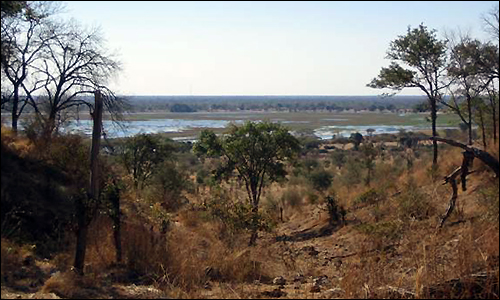Simulation of the Climate Variability and Climate Change Effects on Land Use and Land Cover in Southern Africa Using the SAVANNA Model
Participants: Gloria Pérez-Falcón, Gregory A. Kiker[596KB], Rafael Muñoz-Carpena (UF Agricultural and Biological Engineering); Jane Southworth, Michael Binford, Brian Child, Eric Keys, Peter Waylen (UF Geography), Lin Cassidy (Botswana)
Timeline: June 2009 – July 2010 (Data collection), August 2010 – January 2011 (Testing of SAVANNA model), February 2011 - April 2011 (Calibration and Validation of model applying Global Sensitivity and Uncertainty methods), May 2011 – August 2011 (Scenario testing of models)
Funding Agencies: NASA-LCLUC
Project Summary
The Kwando, Zambezi, and Okavango catchments in southern Africa region have shown sensitivity to climate variability and change. This research links climate variability and land cover land use change (LCLUC), using historical data to project and plan for future scenarios. Human adaptation to climate variability and change can be observed as the spatial and material expression of LCLUC. The SAVANNA ecosystem model will use past and current climate data along with ecological system information to simulate the effect of climate variability on this region's vegetation and ungulate herbivore dynamics. We hypothesize that water will serve as the limiting factor, decreasing vegetative cover and ungulate population. Results of scenario testing and analysis will serve as a guideline and promote informed management action by governing officials.

Namibia/Botswana border.
This page was last updated on July 13, 2019.